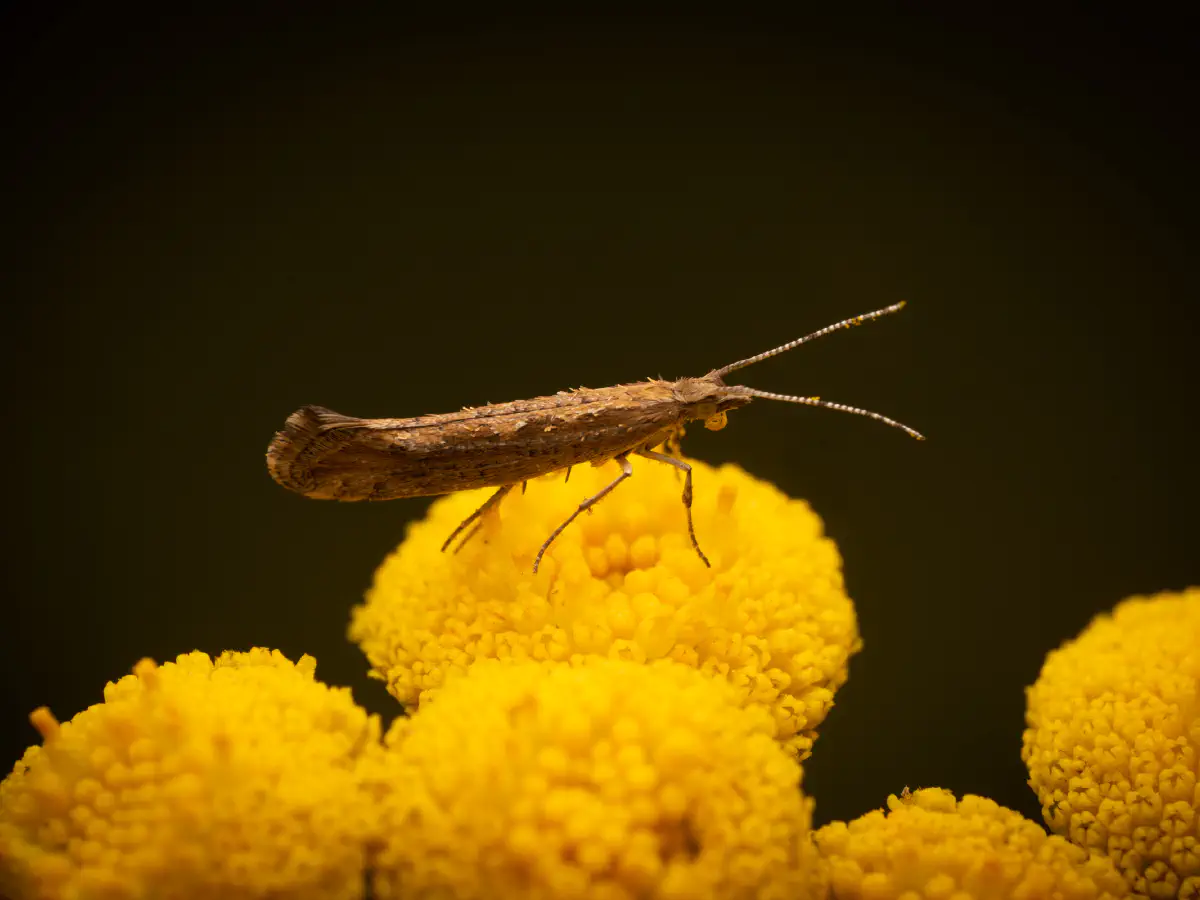This small moth is colored gray and brown. It can potentially identified by a cream-colored band that may be present in the shape of a diamond on its back. The diamondback moth has a wingspan of about 15 mm and a body length of 6 mm. The forewings are narrow, brownish gray and lighter along the anterior margin, with fine, dark speckles. A creamy-colored stripe with a wavy edge on the posterior margin is sometimes
constricted to form one or more light-colored diamond shapes, which is the basis for the common name of this moth. The hindwings are narrow, pointed toward the apex, and light gray, with a wide fringe. The tips of the wings can be seen to turn upward slightly when viewed from the side. The antennae are pronounced. The adults of this species are visually identical to the adults of the New Zealand endemic moth Plutella antiphona.



